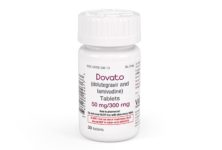Women, especially those 50 years or older, with overt acute hepatitis B were significantly more likely to develop decompensation, according to the results of a recent study.
“This is an unexpected finding. The results suggest that HBV preventive measures are even more important for females,” Ming-Ling Chang, MD, and Yun-Fan Liaw, MD, from the liver research unit at Chang Gung University College of Medicine, Taiwan, wrote. “It is possible that hormonal factor plays some role and the pathogenesis is different between acute infection with different hepatitis virus. Sex-difference in medical care seeking behavior cannot be excluded.”
Between 2010 and 2015, the researchers analyzed 118 patients diagnosed with overt acute HBV and no other concurrent or history of liver diseases or HIV infections. The cohort included 62 men and 56 women with an average age of 38 years (range, 18-83 years). .
The women had a significantly higher international normalized ratio (P < .001), MELD score (P = .001) and rate of decompensation if they were 50 years or older (P < .001) compared with the men; however, the women had lower HBsAg levels.
Multivariate analysis confirmed that female sex (P < .01) and older age (P = .001) were independent host factors for hepatic decompensation development.
“Since serum HBsAg level may reflect the amount of HBV-infected hepatocytes, significantly lower HBsAg levels in females and decompensated patients implicate that female patients had more extensive destruction of the HBV-infected hepatocytes leading to hepatic decompensation,” the researchers wrote. “This is consistent with the notion that females show more robust immune response to acute viral infection. Perhaps the protective role of estrogen has time to operate in chronic HBV infection with defective antiviral immunity but not in acute hepatitis B with robust immune response.”
The authors advocate for further studies, particularly with larger populations, to confirm these observations.
By Talitha Bennett


 ПОИСК ПО САЙТУ
ПОИСК ПО САЙТУ  поиск по ресурсному центру
поиск по ресурсному центру 



